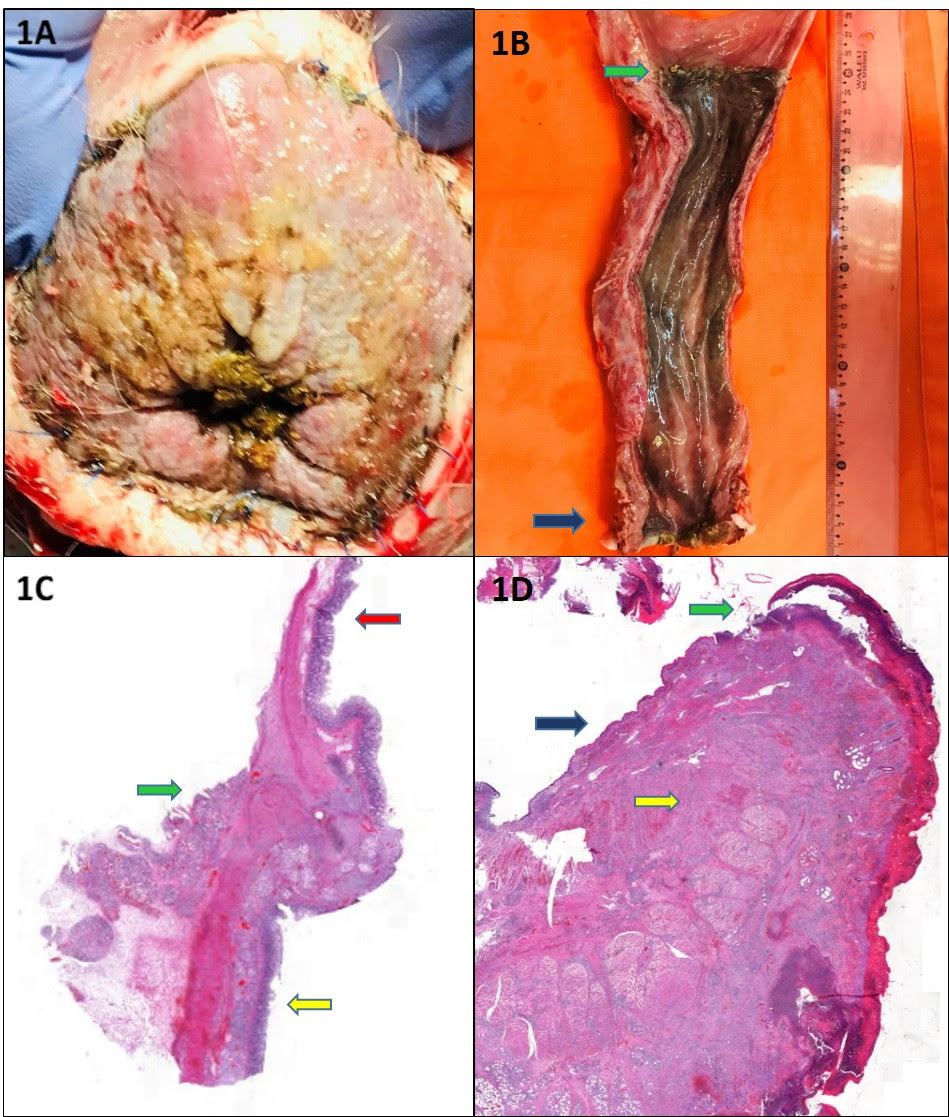Evolution of acute cellular rejection in a swine model of anorectal allotransplantation
Flavio H Galvao1, Cinthia Lanchotte1, Juliana B Salen1, Daniel R Waisberg1, Jun Araki2, Ruy j Cruz3, Eduardo Pompeu1, Julia B Guarana4, Andre D Lee1, Luiz A Carneiro-D'Albuquerque1.
1Gastroenterology, Hospital das Clinicas da Faculdade de Medicina da Universidade de Sao Paulo , Sao Paulo, Brazil; 2Plastic Surgerry, University of Tokyo , Tokyo, Japan; 3Surgery - Transplantation Division, University of Pittsburgh , Pittsburgh, PA, United States; 4Surgery, FZEA-USP, Pirassununga , Brazil
Introduction: Anorectal transplantation is a logical treatment for complex fecal incontinence and permanent colostomy. We have performed murine model of this transplantation observing technical feasibility, good graft recovery (1-4) and signs of less aggressive rejection (4). This survey describes the profile of rejection in a model of allogeneic anorectal transplantation in swine rejection in a swine model of anorectal transplantation.
Method: Twelve male swine (Landrace) weighting 30 to 50 kg were used for four anorectal transplantation and Surgical technique – We used a similar technique previous described for autotransplantation in swine (5). After general anesthesia, abdominal and perianal incision was performed. The graft containing perianal skin, anus and the rectum were removed in block with a vascular pedicle containing the inferior mesenteric artery with an aorta patch and inferior mesenteric vein (IMV). The graft was washed with cold Lactate Ringer and implanted by anastomosis between aorta patch and recipient aorta and IMV and recipient vena cava. After reperfusion, we performed pudendal synthesis, colorectal anastomosis to reestablish the digestive tract and perianal and abdominal reconstitution. The animals were kept in appropriated facilities for clinical and histological evaluation.
Results: Clinical evaluation observed progressive signs of clinical rejection (abdominal distention, obstipation, intense hyperemia, edema and mucorrhea in the anal region in all animals since the fourth POD (1A). All animals from this group were sacrificed at seventh POD because clinical status deterioration. During autopsy, we observed intense inflammatory process inside and around the enlarged and inflamed (1B). Graft rejection was confirmed by histological examination (1C, 1D). These finds of anorectal allotransplantation without immunossupression were similar to that observed recently in dog by Araki et. al. (6).
Conclusion: Here we describe the first observation of rejection in a swine model of anorectal transplantation.

1. Galvao FH, et al. Anorectal transplantation. Tech Coloproctol. 2009;13:55–59. doi: 10.1007/s10151-009-0459-5.
2. Galvao FH, et al. Intestinal transplantation including anorectal segment in the rat. Microsurgery. 2012;32:77–79.doi: 10.1002/micr.20958.
3. Seid VE, Functional outcome of autologous anorectal transplantation in an experimental model. J.Br J Surg. 2015 Apr;102(5):558-62. doi: 10.1002/bjs.9762.
4. Galvao FH, et al. Allogeneic anorectal transplantation in rats: technical considerations and preliminary results. Sci Rep. 2016;6: 30894.doi: 10.1038/srep30894.
5. Galvao FH, et al. An innovative model of autologous anorectal transplantation with pudendal nerve reconstruction. Clinics. 2012;67:971–972.
6. Araki J, Anorectal Transplantation: The First Long-term Success in a Canine Model.
Ann Surg. 2022 Apr 1;275(4):e636-e644. doi: 10.1097/SLA.0000000000004141
[1] anal reconstruction, anorectal transplantation, colostomy, functional recovery, preclinical animal experiment, vascularized composite tissue allotransplantation, rejection
[2] Allograft Survival
